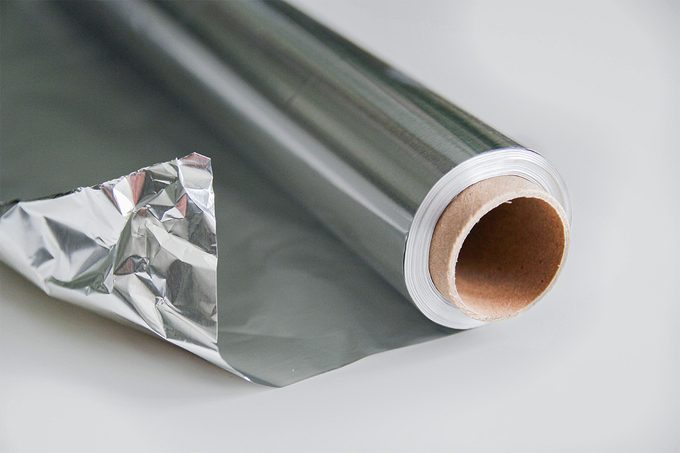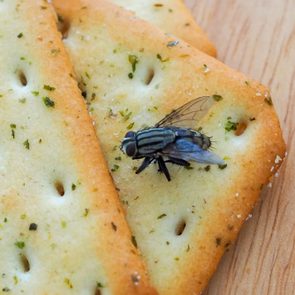Finally! One of your most pressing cooking quandaries, answered

Here’s the Real Reason Aluminum Foil Has a Shiny and a Dull Side

It’s a well-established question and one that we’ve been too afraid to ask our mothers: Should we use the shiny or the dull side of aluminum foil when we cook? Which side will keep everything from reheated pizza slices to baked sole from sticking? And have we been doing it wrong this entire time?!
Read on to learn why aluminum has a shiny side and a dull side.
Get Reader’s Digest’s Read Up newsletter for more news, humor, travel, tech and fun facts all week long.
How can I tell which side of aluminum foil is nonstick?
Concerned cooks, you can breathe a sigh of relief: As it turns out, there’s no “correct” side of aluminum foil to use when cooking, so placing food on either side is not one of those cooking mistakes that’ll ruin your food. According to the USDA, they’re both equally effective at heating your food—so just choose whatever side you prefer.
Why is there a shiny and a dull side?

If there’s no trick to it, then why, exactly, does aluminum foil have a shiny and a dull side in the first place? Experts at Reynolds Kitchens say that the difference between the two sides is due to a manufacturing process called milling, during which heat and tension is applied to stretch and shape the foil. Two layers of foil are pressed together and milled at the same time, because otherwise, it would break.
“Where the foil is in contact with another layer, that’s the ‘dull’ side,” Reynolds explains. “The ‘shiny’ side is the side milled without being in contact with another sheet of metal. The performance of the foil is the same, whichever side you use.”
Which side is better to cook with?
When using standard aluminum foil, it doesn’t make a difference. However, pay attention if you are using non-stick foil; in that case, there is a difference between the two sides. Since the non-stick coating is only applied to the dull side, you’ll want to use that one. Side note: This type of foil has a label specifying the “non-stick side” in case you forget.
What type of foods should not be cooked in aluminum foil?
As it turns out, a small amount of aluminum may leach out of the foil and into your food—particularly if you’re cooking animal-based proteins. One 2019 study published in Food Science & Nutrition looked at 11 foods baked at 425° F for 40 minutes and found that salmon, mackerel and duck breast took on the most aluminum. In 2020, Italian researchers discovered that the metal made its way into beef, chicken and fish that had been wrapped in aluminum foil and cooked at 180° C (356° F) for one hour.
There is no reason to panic, but if you’re concerned about aluminum sneaking into your meals, skip foil when preparing meats at high temperatures and use a stainless steel baking sheet or roasting pan instead.
Why trust us
At Reader’s Digest, we’re committed to producing high-quality content by writers with expertise and experience in their field in consultation with relevant, qualified experts. We rely on reputable primary sources, including government and professional organizations and academic institutions as well as our writers’ personal experiences where appropriate. We verify all facts and data, back them with credible sourcing and revisit them over time to ensure they remain accurate and up to date. Read more about our team, our contributors and our editorial policies.
Sources:
- USDA: “How is aluminum foil made?”
- Reynolds Kitchens: “Heavy Duty Aluminum Foil”
- Reynolds Kitchens: “Non-Stick Foil”
- Food Science & Nutrition: “Aluminum contamination of food during culinary preparation: Case study with aluminum foil and consumers’ preferences”
- International Journal of Environmental Research and Public Health: “Quantification of the Aluminum Content Leached into Foods Baked Using Aluminum Foil”























